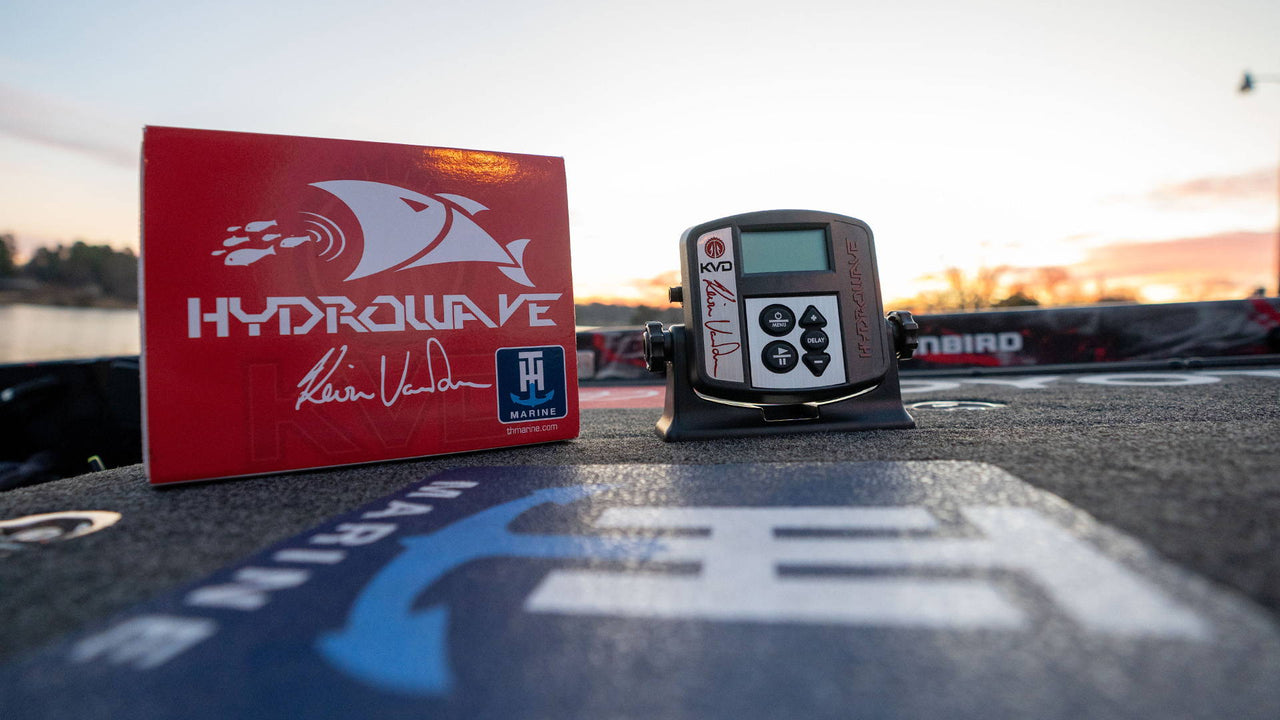Getting your HydroWave up and running is all about reading the conditions you are given on that particular day. Unfortunately, there isn't a combination of settings that is a one-size-fits-all setup. Is it calm and quiet? What are the water temperatures? Where are you fishing? Are the fish schooling? What kind of bait are the fish feeding on? These are things to look at when deciding on your HydroWave settings. Mark Zona has a few baseline setup tips to help you get your HydroWave up and running while on the water.

HydroWave Mastery: Mark Zona's Top Setup Tips
3 HydroWave Setup Tips
1.) Should I use a delay?
For the most part, setting your delay between 15-30seconds is recommended. This is great for when you are beating the bank or if you are out in open water chasing down small groups of fish. However, if you end up in bigger schools of fish, you get them fired up. You don't want to use a delay at all; turn your sound pattern on constant to keep that school firing for as long as possible. This works incredibly well when you target fish chasing bait pods around open water.
2.) How do I set the volume?
What volume you run your HydroWave at is 100% dependent on the conditions you are fishing. If it is early morning and things are quiet and calm on the lake, you will want to run your unit at a lower volume. As the day progresses, the wind picks up, or there is more boat traffic; increase that volume as you see fit. Whether you are trying to cover up your own boat noise or there is just more activity around you, you must adjust your volume to match the conditions in front of you.
3.) What sound pattern should I use?
There are so many different sound patterns to choose from that it can be overwhelming. When deciding what pattern to use, you need to think about what the fish are feeding on and what they are doing. Are you targeting pelagic schooling fish? Are the fish keyed in bream beds? Or are you targeting individual fish on shallow cover? Factors like these are things to consider when choosing the correct sound pattern for your lake.
Like many things in fishing, the HydroWave is a situational tool. It is up to you, the angler, to read the conditions and implement this tool correctly by choosing the right combination of delay, volume, and sound pattern. Reading the conditions and adjusting the settings accordingly can be a trial-and-error process. However, when implemented correctly, the HydroWave will impact your day on the water.






